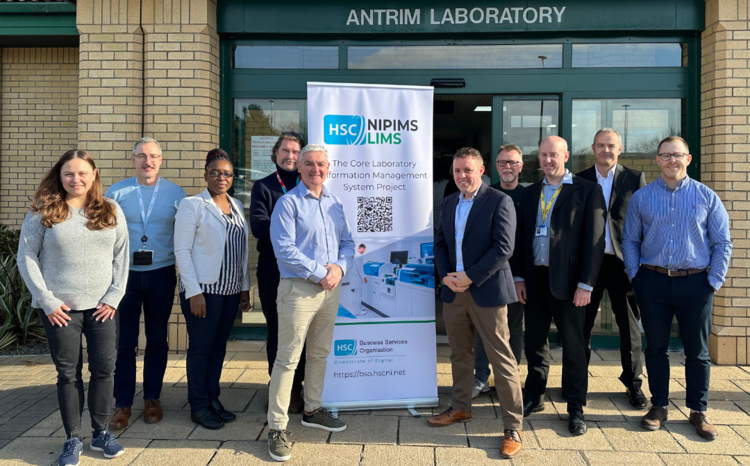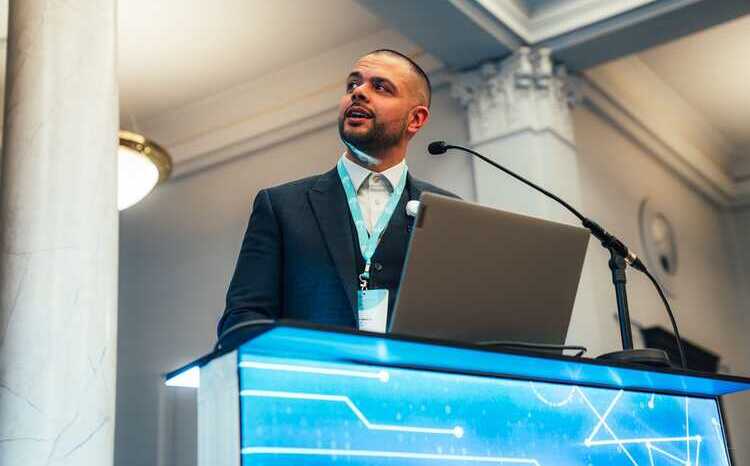AI in pathology: We need to start with ‘easier’ cases and grow to maturity
- 2 August 2023

Artificial intelligence has huge potential in pathology. But to realise its benefits, suppliers should work with customers on use cases that build confidence in the technology, writes Chad Meyers from Clinisys
Artificial intelligence is developing rapidly. If you turn on a TV news report or open a paper right now, there’s a good chance there will be a story about generative AI and the uses (and potential abuses) of products like ChatGPT.
The AI revolution is coming to pathology. In fact, it is already here. And it’s going to deliver a lot of benefits. AI has the potential to support laboratory workflows and the use of their results in clinical practice. However, as we all know, what happens in the lab touches on critical issues for patient care, so we need to build confidence in the use cases.
Securing the foundations
In the US, we have healthcare providers that are interested in using ChatGPT to create lab reports and to format letters – but that’s very complex. It means drawing information from many different systems, understanding clinical context, and trying to apply the kind of knowledge and expertise that it may have taken a pathologist 30 years to acquire.
We need an AI maturity model, which means starting with the easier cases and building confidence. Until we have randomised control trials to show us what is safe, the barriers to getting AI into operational use to improve turnaround times and quality will be lower than the barriers to getting it into applications that impact patient care decisions.
Also, we need to make sure we have the right foundations in place. If you want to build good AI, you need good data. Traditionally, pathology reports are very text based: one pathologist will have one style of writing and another pathologist will have another. That’s not to say that either will be right or wrong, but if we want to feed an algorithm and have it learn quickly, it is much easier to provide it with coded, consistent, complete information than variable text.
One of the things that Clinisys is focused on is supporting clinical coding, and making sure that our systems can work with standards like ICD-10 (which classifies diseases), SNOMED CT (which provides a clinical vocabulary that can be ‘read’ by computers across the world), and CPT codes (which underpin medical billing in the US). We also support initiatives by the College of American Pathologists (CAP), Royal College of Pathologists (RCPA) and other international pathology agencies to move pathologist reporting to discrete data checklists, and have built tools into our LIMS products to enable their use today for many different tissue types.
Getting data to many suppliers
Another thing we need to do is to make sure the information in our systems is available to AI developers and vendors. That shouldn’t be an insurmountable problem. We already send data to third parties, from regulators to cancer registries to researchers.
But we’ll need to work through the new workflows required and develop the interoperability standards and interfaces to support them, and that will require some degree of industry collaboration. Clinisys is vendor agnostic. We know it would be difficult for any single vendor to develop all the AIs that could be developed, so we’re open to working with anybody who has a good idea that solves a problem for our customers.
To do that, we need industry standards for sharing data, and we’re keen to play our part in looking at where we have standards, where we need to update them, and where we need new standards to take account of new information flows.
A wingman for the clinician
We’re not just putting the building blocks in place, though. We’re keen to make AIs available to customers as they become available. One of our US customers, a major academic medical centre, has just gone live with an AI developed by CodaMetrix that supports billing.
When a pathology report is issued in the US, it has certain billing codes attached to it. The AI goes over these codes and suggests whether other or additional codes would be appropriate, based on the work that has been done. NHS labs and labs in other countries don’t need to bill in the same way, but this does demonstrate how AI can support laboratory operations and, eventually, automate routine tasks.
We have also built an interface for receiving image analysis AI into one of our LIMS. Image analysis is an area in which there is a lot of interest. Diagnostic companies are taking data from the images being generated by the digitisation of areas like cellular pathology and women’s health and feeding that to AIs that detect and count cells in the tissue.
It’s a good use of AI, because it can be used by a clinician to support a diagnosis; but it isn’t making a diagnosis. The AI might direct attention to certain areas of the slide, or indicate whether cancer is present, and how much. So, it’s going to be used as a support, to act as a wingman if you like, for the clinician.
Global scale, local applicability
One of the features of the development of AI is that it is happening on a global scale. Different countries have different laboratory systems and that will affect the rate at which they can adopt innovation.
For example, the Netherlands has implemented a common DICOM image format used in their two platforms called PIE and PALGA for digital pathology that enable image sharing, consults and panels, so it should be well placed to adopt AIs quickly, whereas the US is more fragmented, and the UK is somewhere in between. But the applicability of something like image analysis for cellular pathology or breast cancer is global.
In fact, it will be interesting to see if the take-up of AI is a catalyst for further standardisation in laboratory practices. In the US – and to some extent in the UK – labs still have their own codes and lists of tests. If we could get everybody to adopt internationally accepted standards, we would be able to move much faster.
In the meantime, Clinisys will make sure that developers have access to the data they need and work with customers on use cases. In the UK, we expect pathology networks to be interested in AI to address operational challenges, like getting work to the right pathologist at the right time, based on their expertise and workload.
Yet, at the same time, we already have multiple customers across several countries that want to push the envelope on image analysis. We want to enable those use cases, so we can generate familiarity with and confidence in AI. Who knows, ChatGPT may be with us sooner than we think.





